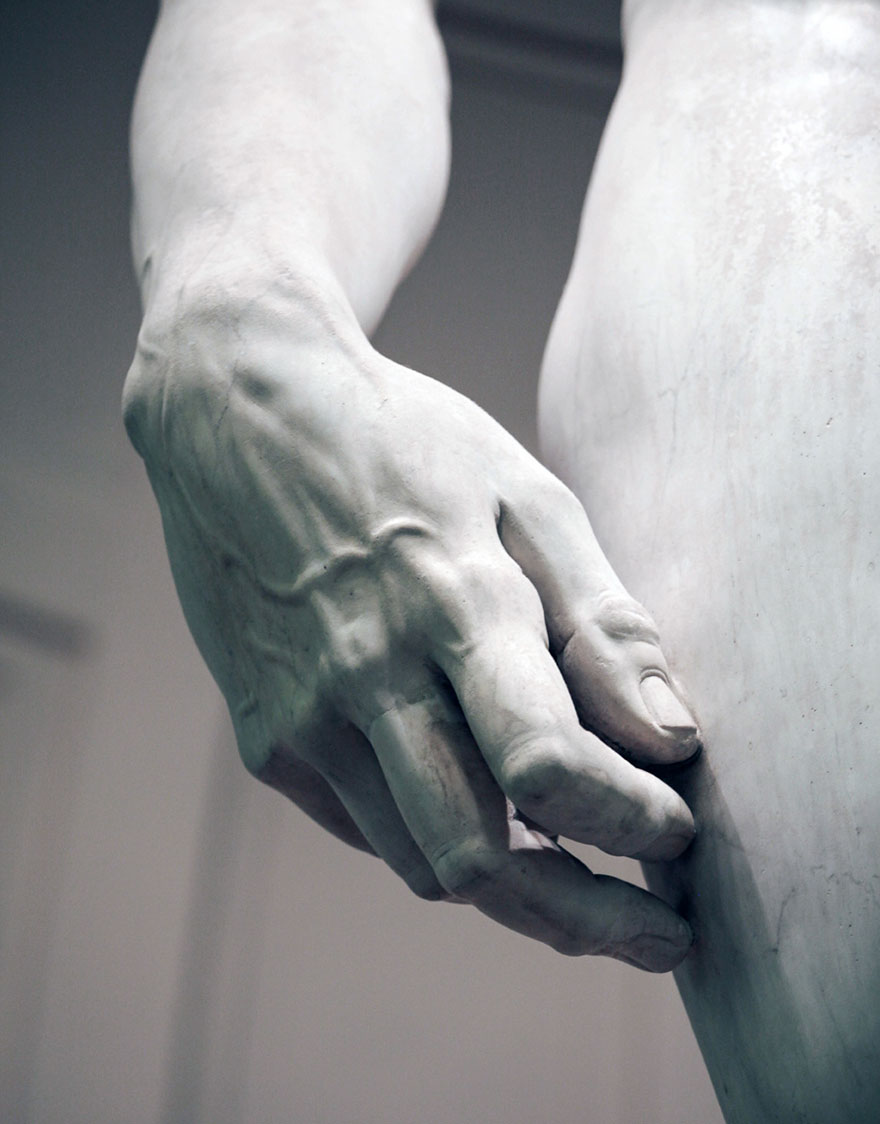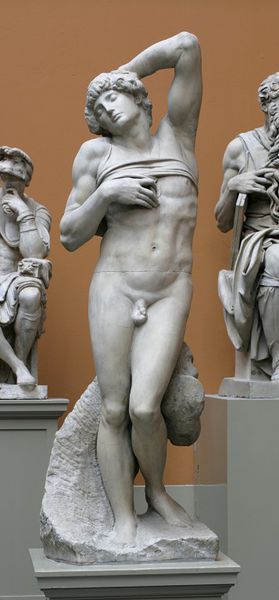Renaissance art

Da Vinci, Donatello, Michelangelo and Raphael
These four artists are often considered four of the most important visual artists in all history. Their contributions to the Renaissance - almost all of them arriving at the same time - make for a significant historical mark.
Sculpture

Gian Lorenzo Bernini, The Rape of Proserpina
New scenes and portrayals in sculpture also allowed for artists to be more imaginative. In this medium, artists such as Bernini, Donatello, and Michelangelo excelled. In addition to the extra motivation provided by the rich Medici family, their ambitious ideas and attempts to be realistic both in form and in composition raised the bar for Renaissance era sculpture. This was of course inspired by the rediscovery of Greek and Roman sculptures. Michelangelo was actually there in person at the discovery of the then almost 1500 year old Laocoon, where direct influence on Michelangelo can be seen. Michelanglos inspiration from the frantic and hyperextended poses found in the Laocoon can be cited as the first hints of Mannerism, a style of composition kicked off by Michelangelo.

Subtopic

Michelangelo, David (detail)

Michelangelo, Dying Slave
A record high amount of wealth owned by the Medici family contributed to the explosion of quality art in the Renaissance also. The Medici family felt their wealth must be expressed in a material way. The demand for the a high amount of incredibly quality art was higher than ever.
Painting
Oil painting:
Oil painting techniques and materials were improved upon, allowing ideas and technicalities to improve.
Similar to oil, other mediums such as fresco and tempura, and plaster in general got better as time went on. As oil was still imperfect, artists such as Michelangelo and Raphael used plasters on their bigger projects, while oil was more useful for smaller paintings by artists such as Leonardo da Vinci.
New, ambitious styles of art are being preformed. New techniques such as foreshortening and new discoveries in optics and perspective assist in creating realism.

Jan van Eyck, Portrait of a Man with a Blue Chaperon, 1430. This is one of the earliest examples of believable realism in art - predating all three of the major renaissance painters.
New scences being portrayed
The portrayal of new scenes - often still Biblical or from Greek mythology - in art allowed for artists to appear more innovative, creative, and refreshing.

Judith, Sebastian del Piombo, 1510
